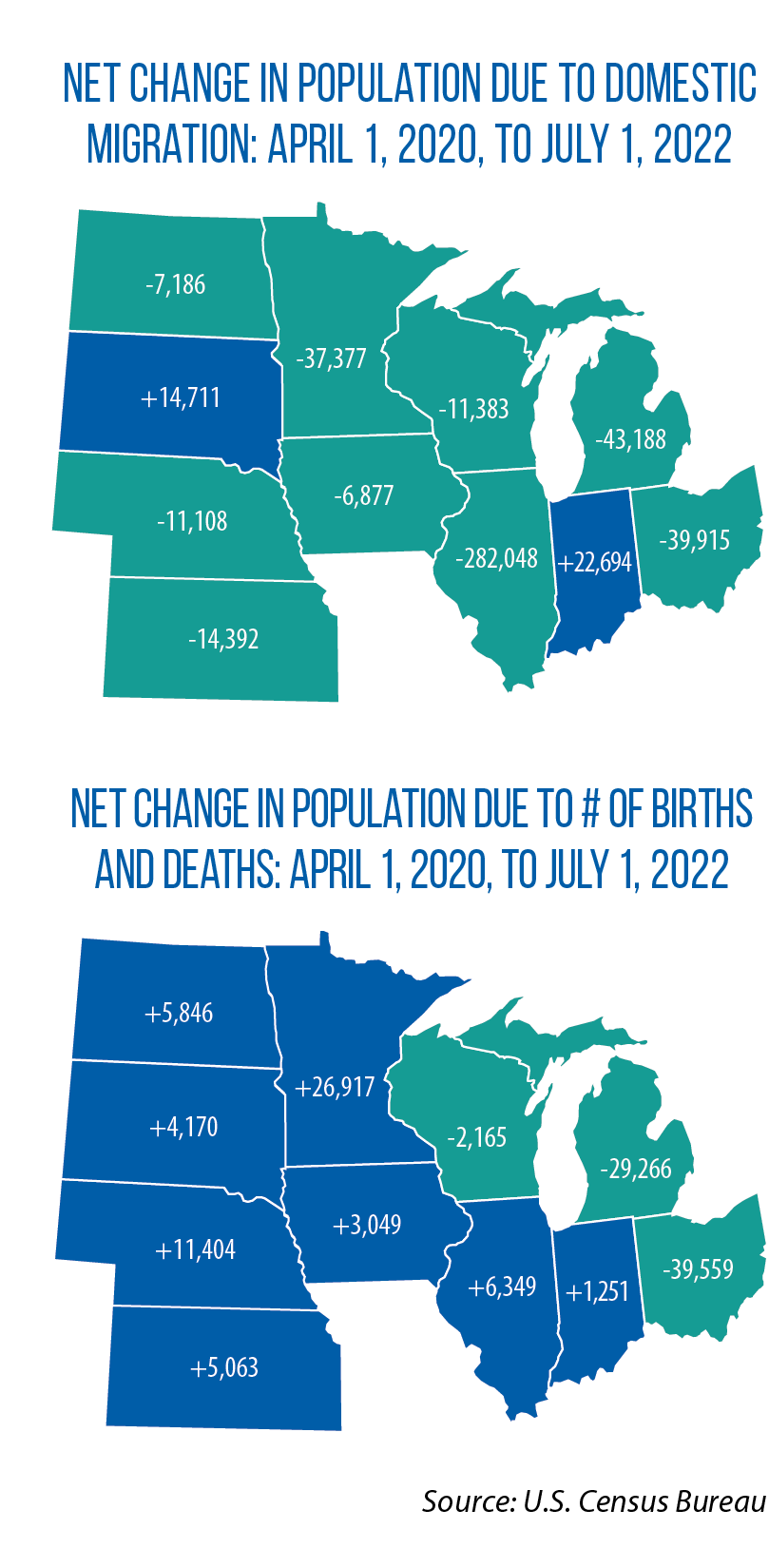Midwest lost more than 400,000 people to other U.S. regions between 2020 and 2022
January 27, 2023
|
By Tim Anderson
During the first two years of this decade, Illinois, Michigan and Ohio lost population, and another six Midwestern states lagged behind the U.S. increase of 0.6 percent. Driving these trends are losses in people due to domestic migration: the movement of individuals from one U.S. state to another state.
States in the U.S. South (led by Florida and Texas) gained more than 1.7 million people due to domestic migration between April 1, 2020, and July 1, 2022. Every other region experienced a net loss, including the Midwest, which had a net decline of more than 400,000 residents. In all, nine Midwestern states are losing population due to domestic migration (see the map), though Illinois stands out: Its net loss was third highest in the nation, behind only California and New York, and accounted for 68 percent of the region’s total drop.
Along with domestic and international migration, population changes are determined by a state’s number of births compared to its number of deaths. Historically, most or all U.S. states have experienced “natural increases”: more births than deaths. In recent years, however, “natural decreases” have become more common. Between April 1, 2020, and July 1, 2022, the number of deaths exceeded births in 24 U.S. states, including Michigan, Ohio and Wisconsin (see map).
Nationwide, between 2020 and 2021, the population grew at a historically low rate of 0.1 percent, due in large part to the COVID-19 pandemic and its impact on international migration and mortality. The increase between 2021 and 2022 was 0.4 percent.
A rebound in net international migration, along with the largest year-over-year increase in total births since 2007, led to the “sizeable uptick” in U.S. population numbers between 2021 and 2022, says U.S. Census Bureau demographer Kristie Wilder. All 11 Midwestern states had a net gain in population from international migration.
| State | % change |
|---|---|
| Illinois | -1.8% |
| Indiana | +0.7% |
| Iowa | +0.3% |
| Kansas | 0.0% |
| Michigan | -0.4% |
| Minnesota | +0.2% |
| Nebraska | +0.3% |
| North Dakota | 0.0% |
| Ohio | -0.4% |
| South Dakota | +2.6% |
| Wisconsin | 0.0% |
| U.S. | +0.4% |